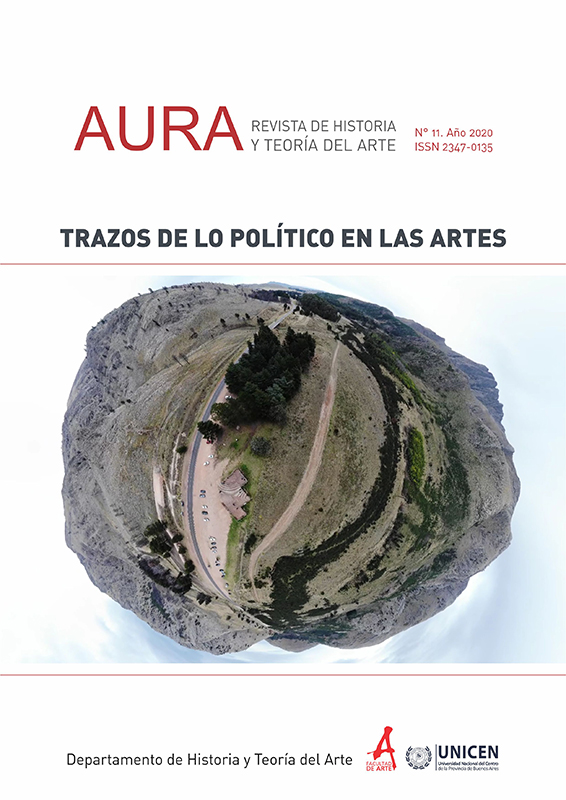The Basara aesthetic: New considerations on the history of Japanese art
Keywords:
Basara, Tenmyouya Hisashi, Okamoto Tarō, japanese aestheticsAbstract
At the beginning of the twenty-first century, the contemporary artist Tenmyouya Hisashi got the aesthetic concept Basara back. Throughout this concept, which was developed in his BASARA. The Japanese art theory crossing borders (2010), Tenmyouya suggested an alternative Japanese history of art which could get out of the classic historiographies. In his opinion, these had selected and enhanced only some features of the Japanese art and had left some important ones out. In this way, taking into account some of the claims of the avant-garde artist Okamoto Tarō, he framed a creative and innovative point of view. From this new perspective, the heterogeneous world of the Japanese art became accessible through different art pieces, artists and theories, which had gone unnoticed for the Japanese and Western public for decades. This proposal acknowledged that it is impossible to talk about a unique and homogeneous ‘Japanese art’, but about a complex organism formed by diverse trends that prove its complexity.
References
- Cassegard, Carl (2011): “Japan’s lost decade and its two recoveries. On Sawaragi Noi, Japanese neo-pop and anti-war activism”. En: Cornyetz, Nina y Keith, Vincent (eds.), Perversion and Modern Japan. Psychoanalysis, Literature, Culture. Londres: London and NY: Routledge.
- Guth, Christine (2009): El arte en el Japón Edo. Madrid: Akal.
- Karatani, Kōjin. (2005) “Overcoming Modernity”. En: Calichman, Richard (ed.): Japanese contemporary thought. New York: Columbia University Press.
- Lanzaco Salafranca, Federico (2003): Los valores estéticos en la cultura clásica japonesa. Madrid: Verbum.
- Larking, Matthew, (2013): “Nihonga Beside Itself: Contemporary Japanese Art’s Engagement with the Position and Meaning of a Modern Painting Tradition”. En: Literature & Aesthetics, 23, 2, Sydney.
- Mishra, Pankaj (2014): De las ruinas de los imperios: La rebelión contra Occidente y la metamorfosis de Asia. Barcelona: Galaxia Gutenberg.
- Murakami, Takashi. (2005): “Earth in my Window”. En: Murakami, Takashi (ed.): Little Boy: The Arts of Japan’s Exploding Subculture. New Haven: Yale University Press, p. 141.
- Okakura, Kakuzō (2018): Los ideales de Oriente. Gijón: Satori.
- Okamoto, Tarō (1970): “This wanton beauty”. En: This is Japan!, 18, Tokio, pp. 215-219. En línea: http://blog.sdrobertson.org/2013/05/this-wanton-beauty.html.
- Okamoto, Tarō (2010) “Nihon no dento”. En: Tenmyouya, Hisashi (ed.), BASARA. Japanese art theory crossing borders: from Jomon pottery to decorated trucks. Tokyo: Bijutsu Shuppan-sha, Co., LTD.
- Reynolds, William (ed.) (1976): Meiroku Zasshi: journal of the Japanese enlightenment. Tokyo: University of Tokyo Press.
- Rieu, Alain-Marc (2014): “The syndrome of “overcoming modernity”: Learning from Japan about ultra-nationalism”. En: Transtext(e)s Transcultures 跨文本跨文化, 9, Lyon.
- Sawaragi, Noi (1998): Nihon Gendai Bijutsu. Tokyo: Shinchosa.
- Sharf, Robert, (2013): “The Zen of japanese nationalism”. En: History of Religions, 33, 1, Chicago.
- Tatsumi, Yoshihiro (2009): Una vida errante. Bilbao: Astiberri.
- Tenmyouya, Hisashi (2010): BASARA. Japanese art theory crossing borders: from Jomon pottery to decorated trucks. Tokyo: Bijutsu Shuppan-sha, Co., LTD.
- Vartanian, Ivan (2005), Drop dead cute: the new generation of women artists in Japan. San Francisco: Chronicle.
- Westgeest, Helen (2011), “No meaning, no composition, no colour: from zero to Gutai”. En: Franciolli, Marco y Namioka, Fuyumi (eds.), Gutai: Painting with Time and Space. Milán: Silvana Editorale. En línea: https://www.0-archive.info/gutai-by-helen-westgeest.html# [Consulta: 03/05/2019].
- Weston, Victoria (2004): Japanese Painting and National Identity: Okakura Tenshin and His Circle. Michigan: Michigan Monograph Series in Japanese Studies.


